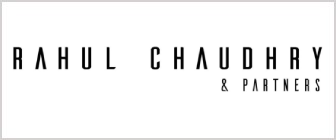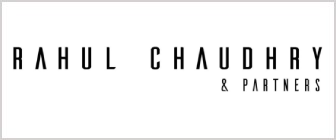This article analyses the concept of comparative advertising within the domain of the Trademark regime, studying the various components involved, including the statutory laws and judicial pronouncements in India.
Introduction:
Advertising is one of the most effective and proven ways to attract the attention of potential consumers in a market. Comparative advertising, also known as “comparison advertising,” is a type of marketing in which a brand compares itself with its competitors to highlight parity or superiority. Comparative claims may vary in nature; they may either emphasise the similarities or the differences between the compared products or services. They may also state that the advertised product is ‘better than’ or ‘as good as’ the competitors.
Comparative advertisement can be divided into two categories, Direct Comparative Advertisement and Indirect comparative advertisement. In Indirect Comparative Advertisement, the name of the competitor or the product being compared is not directly mentioned, but the same is implied. It indicates that their product is superior to or similar to the product/service of other brands in the world. For example, Dove’s advertisement, shows the consumers that their moisturizer is better than its competitors. While the competitor’s name is not mentioned directly, the bottle with spikes represents Dove’s competitor in the market.
However, in Direct Comparative Advertisement, the name of the competitor or product being compared is directly mentioned. For example, Samsung and Apple, where Samsung announced the Galaxy S22 Ultra, which features a 108MP main camera and its 100x Super Zoom, for having the highest resolution camera in any smartphone and claimed that “it is not coming to any iPhone near you”1.
Statutory laws on Comparative Advertisement
Comparative advertisements are not considered illegal in India as long as it complies with the laws. However, if an advertiser uses a competitor’s trademark to make a comparison between his goods & services and those of his competitor, and, in the process, disparages them, then such an act on the part of the advertiser would invoke issues related to infringement under the Trademarks Act, 1999.
Trademark infringement in advertising is defined under Section 29(8) of the Trademarks Act, 19992 . It states that any advertising that is not in accordance with honest practices; or is detrimental to the distinctive character, or repute of the trademark shall be an act constituting infringement. However, at the same time, Section 30 (1) of the Trademarks Act, 19993 makes comparative advertising an exception to acts constituting infringement under Section 29. It states that if the advertiser is just emphasising his claim about his own goods or services without disparaging the competitor’s goods or services shown in the advertisement, this will amount to an honest practise and legally permitted.
Honest Practise in comparative advertisement
The question of whether a comparative advertisement is honest or not depends on the impression that the advertisement or commercial registers in the viewer’s mind. In general, honest practise does not mislead customers, does not disparage the goods/services of competitors, and does not create any confusion in the consumer’s mind.
Under Section 30(1) of the Trademarks Act, 19994 comparative advertisement is permitted in three ways:
a. If there is a bona fide use of the trademark,
b. If the advertisement is in accordance with honest practises,
c. If the advertisement does not take unfair advantage of the reputation of the mark.
Thus, merely puffing up the own product is allowed in an honest trade practise, but the moment there is derogatory reference to the competitors’ good/ service in the advertisement, such comparative advertisement is not permitted due to the presence of element of defamation5.
Judicial Pronouncements
Dettol vs Santoor Handwash6 : Recently, the Delhi High Court, in its judgement dated May 18, 2023, held that mere puffery is not actionable in cases of comparative advertisement. It has to be seen whether the overall effect of the commercial is to promote one’s own product or disparage the rival product; an unfavourable comparison may be made to the extent that it does not affect the storyline or message underlying the commercial. Thus, no injunction was granted against the impugned advertisement.
Pepsi Co. Inc. and Ors. V/s Hindustan Coca Cola Ltd. and Ors.7 : The Delhi High Court held that the word PAPPI written on the bottle shown in the respondent’s advertisement clearly indicated the trademark PEPSI of the appellant. It stated that the “manner of the commercial”, is one of the most important factors. If the manner is ridiculing or condemning the product of the competitor, then it amounts to disparaging. Respondents projected PEPSI to be only a sweet drink, hence of inferior quality, and by calling it “Yen Bacchon Wali Hai”, the respondents depicted the commercial in a derogatory and mocking manner, which is not permissible under the law. Thus, the court granted an injunction against the respondent for publication and screening of the impugned advertisement.
Dabur India Limited vs Shree Baidyanath Ayurved Bhawan8 : This case was based on generic disparagement of a specified commodity wherein it was held that even if there is no direct reference to the product of the Plaintiff and only a reference is made to the entire class of Chayawanprash in its generic sense, even in those circumstances disparagement is possible. The Court stated “the defendant is propagating in the advertisement that there should be no consumption of Chayawanprash during the summer months, it is also propagating that the plaintiffs Chayawanprash should not also be taken during the summer months as it is not good for health and instead Amritprash, which is the defendant's product, should be taken. Such an advertisement is clearly disparaging to the product of the plaintiff as there is an element of insinuation present in the said advertisement." Thus, the court granted an injunction against the impugned advertisement.”
Conclusion:
The Indian judicial system recognises that unfair trade practises can be ascertained only in the presence of incorrect or deceptive facts through scientific or technical assessment of the claims. It is not actionable if the manner is only to show one's product better or best without derogating the competitor's product. Thus, Courts have taken the position that "publicity and advertisement of one's product with a view to boosting sales is a legitimate market strategy." 9
The aforementioned information leads to the conclusion that there are certain guidelines that the Courts have recognised when it comes to the comparison of competing products, which the brand owners must adhere to either in Direct Comparative Advertisement or Indirect comparative advertisement.
About the author:
Aakriti Singh is an Associate at Rahul Chaudhry & Partners. She is a 2020 law graduate from the University of Calcutta. Aakriti has over a year of experience and is actively involved in handling all trademark prosecution matters for the firm.
1https://www.businesstoday.in/technology/news/story/lack-of-innovation-samsungs-latest-ad-takes-a-dig-at-apple-ahead-of-iphone-14-launch-event-346283-2022-09-02
2https://indiankanoon.org/doc/84096/
3https://indiankanoon.org/doc/1881111/
4https://indiankanoon.org/doc/1881111/
5https://blog.ipleaders.in/analysis-infringement-trademark-comparative-advertising/
6https://lawbeat.in/sites/default/files/2023-05/Reckitt%20Benckiser%20v%20Wipro%20enterprises.pdf
7https://indiankanoon.org/doc/924003/
8https://indiankanoon.org/doc/22130874/
9https://www.legalserviceindia.com/article/l182-Comparative-Advertising-laws.html



